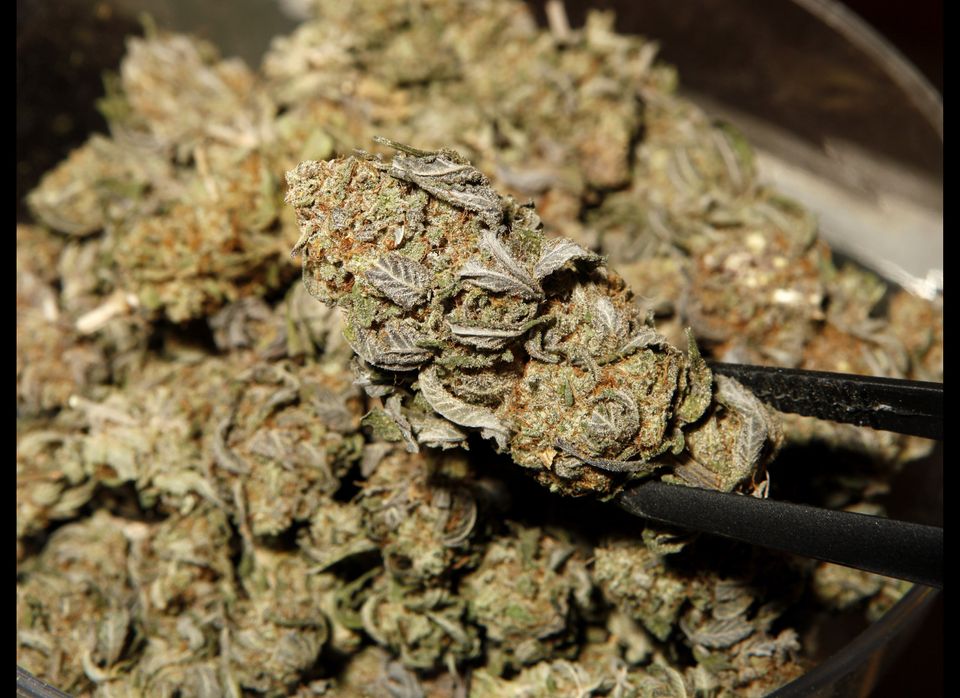
CBD vs THC | Simply ERB
CBD vs THC: What’s the Difference?
We’re going to get straight to the point. CBD provides many of the same health benefits of THC without the high, CBD that is derived from hemp is legal in all 50 states, and it’s impossible to fail a drug test when consuming pure CBD. THC, on the other hand, does get you high, is federally illegal and you will fail a drug test if you are consuming THC. CBD has virtually no known side-effects while THC may cause temporary side effects that include red eyes, dry mouth, increased heart rate, slow reactions, and memory loss.
These are the obvious differences between CBD and THC, but the rest of this article we’ll talk about some of the non-obvious differences and some of the similarities between the two most popular cannabinoids. Read on to dive deep into what separates these two cannabinoids and what brings them together.
Endocannabinoid System Review
Before understanding the differences in how CBD and THC work, it’s best to do a quick review of the Endocannabinoid System (ECS). It was research conducted on THC that led scientists to discover the ECS in the late 1980s. Scientists first discovered the receptor that THC was binding to which they called CB1, and soon after, they found that our bodies produce chemicals called endocannabinoids that are very similar to cannabinoids in cannabis.
The ECS is found in nearly all of the organs in the human body and helps to keep all of our bodily functions in balance by using cannabinoid receptors (lock) and endocannabinoids (key). The ECS is also made up of degrading enzymes that breakdown and recycle cannabinoids. Together, (1) cannabinoid receptors, (2) endocannabinoids, and (3) enzymes make up the ECS whose main job is to promote balance and homeostasis in our cells and organs. Plant cannabinoids that are found in cannabis provide many of their medicinal benefits by mimicking our body’s naturally occurring endocannabinoids.
Cannabinoid Receptors: The ECS contains two primary cannabinoid receptors called CB1 & CB2, and both of these receptors can be found all over the body. CB1 is most prevalent in the brain (nervous system) and is the receptor that provides the euphoric feeling that is associated with smoking cannabis. THC binds directly with our CB1 receptors to produce the high that many of us are seeking. CB2 receptors, on the other hand, are most prevalent in our immune system, can’t get you high, and are most concentrated in our spleen. A secondary level of cannabinoid receptors has also been identified, and the most popular one of these receptors is called TRPV1. Chili peppers can provide pain-relieving properties by producing a chemical that binds to our TRPV1 receptors. Many scientists believe there are a diverse number of secondary cannabinoid receptors that will soon be discovered.
Endocannabinoids: The ECS has two main endocannabinoids, AEA & 2-AG. These endocannabinoids are made on-demand and are most present at wound sites, tumor sites, and inflamed areas of the body. By changing our diet and lifestyle, humans can have a significant impact on our endocannabinoids’ ability to fight and prevent diseases naturally. When our body’s endocannabinoids fail to promote healing, plant-based cannabinoids may provide solutions. The endocannabinoid AEA has been found to suppress melanoma skin tumors in humans via CB1 activation! Both endocannabinoids and plant cannabinoids have shown anti-cancer properties.
Enzymes: Our body also produces enzymes called FAAH and MAGL that break down our endocannabinoids and cannabinoids. Foods and bioactive compounds that inhibit the production of these enzymes can provide wellness benefits by extending the life cycle of cannabinoids.
To better visualize what cannabinoids and their membrane receptors do, think of the cannabinoids as a key and the membrane receptors as the lock. When the right cannabinoids bind to the proper receptor, an intracellular response occurs. This model is extremely simplified, and in reality, the ECS is complex, regulates a wide range of body processes, and compliments many other systems.
Similarities Between CBD & THC
CBD and THC are the two most talked-about cannabinoids and researchers are just beginning to peel back the onion to uncover exactly how these compounds work on the cellular level. Both cannabinoids have similar chemical structures and mimic our body’s endocannabinoids, but they provide therapeutic benefits through strikingly different biological mechanisms and pathways.
Both CBD and THC have been shown to decrease inflammation, relieve pain, improve moods and mental health, reduce aches and sores, reduce nausea and vomiting from chemotherapy and other medical treatments, provide antimicrobial properties, are neuroprotective and showcase anti-cancer properties.
Differences Between CBD & THC
It turns out that there is a lot of overlap and synergies between the two cannabinoids, but there are also some major differences. CBD & THC both interact with our endocannabinoid system, but the biggest difference is that THC binds directly to our CB1 and CB2 cannabinoid receptors while CBD acts more indirectly. CBD has also been reported to bind to secondary receptors such as TRPV-1 and inhibit certain enzymes that degrade endocannabinoids.
CBD is coveted due to its non-psychological medical properties and the majority of scientists and cannabis organizations believe that CBD will have a much bigger impact on the healthcare space than THC. However, researchers are still trying to discover all the specific pathways that CBD impacts our body and the endocannabinoid system.
Non-Binding Therapeutic Properties of CBD
CBD does not have the same binding power as THC does when it comes to our CB1 & CB2 cannabinoid receptors, but CBD can impact nearly every part of our body by indirectly working through a variety of molecular pathways.
CBD research is constantly evolving and improving, but most researchers believe CBD works by allowing our own endocannabinoid system to function at a higher level. CBD also regulates how our nerve cells communicate by regulating ions such as sodium, calcium, potassium, and chloride. This is one of the main reasons CBD has been so effective at treating certain cases of epilepsy where there are changes in the movement of sodium in and out of cells.
Many of CBD’s therapeutic properties are contributed to how it can support the health and function of the endocannabinoid system without binding directly to CB1 or CB2 cannabinoid receptors. Some studies suggest that CBD provides therapeutic properties by optimizing the productivity of our own endocannabinoids and the expression of cannabinoid receptors. More specifically, CBD inhibits the degradation of anandamide (AEA).
AEA is the bliss like molecule that binds to our CB1 and CB2 receptors and CBD extends the period of time that AEA can bind to our cannabinoid receptors. Researchers believe this is due to the ability of CBD to inhibit the production of enzymes that break down cannabinoids. One of these enzymes is fatty acid amide hydroxylase (FAAH) and studies suggest that enzyme inhibitors such as CBD optimize the endocannabinoid system by providing more time and a better environment for endocannabinoids and cannabinoids to bind to our CB1 and CB2 receptors. As we age our body begins to produce fewer endocannabinoids and CBD supplementation may become one of the best ways to slow the biological aging process. CBD’s ability to inhibit the degradation of AEA also plays a role in enhancing the properties and lifecycle of THC and other cannabinoids in our bodies.
Many CBD consumers utilize this non-psychoactive cannabinoid as preventative medicine and CBD has been shown to interact with the cancer-causing gene Id-1. ID-1 gene is only found in cancer cells and activation has been linked with aggressive forms of breast cancer that metastasized throughout the body. ID-gene inhibitors such as CBD can be an important antioxidant to add to our diets. CBD was the first nontoxic inhibitor of this gene activation and should be universally accepted as complementary cancer therapy. A wide variety of cancers are believed to spread by the activation of Id-gene.
As you can see, CBD provides the majority of its medicinal benefits by working outside of or indirectly with cannabinoid receptors, but it does bind to similar receptors such as serotonin receptors (5-HT1A), TRPV-1 receptors, peroxisome proliferator-activated receptors (PPARs) and GPR55s. All of these receptors are g-protein receptors and they all work in a similar lock and key mechanism.
- Serotonin Receptors: Serotonin 5-HT1a receptors play a role in anxiety, sleep, mood, and pain. Research has also shown CBDa (acid form) shows greater binding potential when compared to CBD. Serotonin plays a major role in stress and anxiety and CBD creates an anti-depressant effect when it binds to serotonin receptor 5-HT1a. Researchers
- TRPV-1 Receptors: TRPV-1 Receptors play a role in body inflammation and pain management. Many times this group of receptors are targeted in arthritis creams and supplements that attempt to use capsaicin (hot chili peppers) to active the receptor. AEA is also a TRPV-1 binding agonist.
- Peroxisome Proliferator-activated Receptors PPARs: CBD is an agonist to peroxisome proliferator-activated receptors (PPARs) and can be given the credit for many of CBDs benefits. These include antiproliferative actions and the ability to degrade the Alzheimer’s linked molecule amyloid-beta plaque. N-palmitoylethanolamide (PEA) and N-oleoylethanolamide (OEA) also bind to PPARs and CBD’s ability to halt the enzyme FAAH further stimulates these receptors.
- GPR55: CBD acts as an agonist to man receptors, but CBD has been found to be an antagonist (blocks) to GPR55 receptors, and its a good thing. Overstimulation of GPR55 is connected to osteoporosis and the growth of tumor cells. CBD helps to regulate GPR55 and can increase bone density and prevent cancer cells from robbing our body of nutrients. GPR55 antagonists have also shown to be helpful in managing intestinal inflammation.
Story Wrap Up
CBD and THC have a lot of differences, but many consumers and scientists would argue that they are best consumed together. ERB challenges the assumption that CBD isolate or any isolated compound for that matter is more effective than consuming the whole flower or an extract that is ‘full spectrum’. We strongly believe in the synergistic properties and the entourage effect that exists not only CBD and THC, but the hundreds of other chemicals that play a role in the medicinal and lifestyle benefits of cannabis. Both CBD and THC provide their own medicinal benefits and both are considered safe holistic options.

